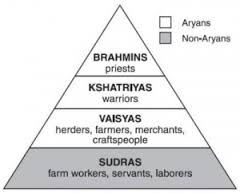- Home
- History of India
- Ancient India
- Vedic Civilisation
Vedic civilisation
Updated on 31-08-2022
Vedic Civilisation came into existence after the Indus Valley Civilisation. Literal meaning
of Veda is knowledge. During Vedic civilisation four important Vedas were
composed. It is believed that the lighter coloured skinned Aryans who came from
Europe side pushed Dravidian to South India.
Thus a new civilisation came into existence around 1500BC to 500B.C. Aryans who spoke an Indo European language brought with them a religion based worships of many Gods and Goddess. Linguistic similarities between Indian and European language were recognised by the earliest European scholars.
People of Vedic Civilisation spoke the Indo European language from which many languages like Sanskrit, Persian Latin, Greek Celtic have evolved. There are many similarities between Sanskrit and other European languages.
The ancient religion is depicted in collection of oral poetry and prose, hymns, prayers chants spells and commentaries known as Vedas. These were composed when Aryans came to India and hence some believe that Aryans might have indeed composed the Vedas.
The origin of Aryans is still a controversy. Many think they lived in Central Asia, some think they lived in Sapta-Sindu or Punjab. The geographical conditions in Rig Veda points out to this region. But this theory is still not convincing. It is believed that Ayurveda took birth during Vedic period.
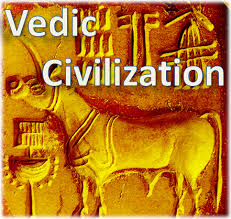
Early Vedic Civilisation
Early Vedic civilisation or Rig Vedic civilisation.
Aryans were very simple and led a simple life. They worshipped forces of nature. The deities worshipped in Early Vedic Civilisation or Rig Vedic Aryans were Prithvi, Agni, Vayu, Varuna, Surya, Indra. To please these Gods they usually performed yajna by offering prayers, ghee and by doing sacrifices like animals.
Social life in Early Vedic Civilisation or Rig Vedic period was basically nomadic lifestyle and cattle rearing played an important role. The society was divided into four major groups called Brahmans, Kstriyas, Vaisyas and Shudras.
The main occupation of the people was agriculture and hobbies included dancing, singing, horse trading, gambling. This shows that they had lot of free time. Wheat, barley and milk products were used as diet. Trade and commerce also developed fairly during this period. Coins were not in use and barter system prevailed.
Main occupation of Brahmans was teaching and priest in temples, Kshatriyas defended the country, Vaisyas carried on trade and Shudras did menial jobs. Yagnas were performed by priests to please the nature/ God. Women enjoyed great respect and value in the society.
No religious functions would be complete without the presence of women. They were allowed to get education and go outside house. Brahmans were given highest jobs in society and were highly respected.
The primary function of the King was to protect the interest of people and security of his citizens. The King was responsible to maintain law and order situation in the state and maintain peace in society. Kings used to perform Yagnas with Brahmins for which Kings received voluntary offerings from his subjects.
These were known as Bali. These offerings were made in kind and voluntary. The main income was from the money received on winning a war. The King appointed a guide, philosopher and various ministers to run the state easily.
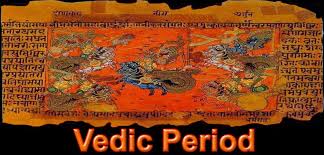
Religion in early Vedic period
Aryans in early Vedic Civilisation were staunch believer in God. They were highly religious and God fearing. Indra was the most important God. Around 250 hymns were devoted to him. The second most devoted God was Agni on whom 200 hymns were written.
The prayers offered to Agni were supposed to be carried in the form of smoke to the sky and thus transmitted to the Gods. Other Gods whom Aryans worshipped were Varuna (God of rain), Sun (God of energy) and Rudra (God of destruction).
The Rig Vedic people believed in life after death so they either cremated or buried with all food requirements and according to some passages dwelt in the realm of Yama, the king of the dead.
Economy in Early Vedic civilisation:
The Aryans lived a comfortable and luxury life. Agriculture was the main occupation for people in Early Vedic Civilisation. From some of the Vedic texts, we can understand that the Aryans ploughed their field with 24 oxen to drag heavy and large ploughs. The ploughed land was known as Kshetra. Wheat and Barley were the main crops. Rice was grown in plenty.
Water supply to irrigation fields was through a system of canals. People of this period also were aware of methods to prepare and use manure from the naturally available products.
The words like Shepard's and pastures have been mentioned in Vedic texts, which show that the people of Vedic period were primarily nomads and went to different places for grazing. Cattle rearing were another means of living. Cow was considered as sacred animal and was called Ghaya in Vedic Civilisation.
Cows had great respect and slaughtering of cow was banned. Cow was a symbol of wealth and prosperity. People and the wealth of people were judged based on the number of cows a person owned.
Apart from agriculture and animal husbandry weaving was also another occupation in Early Vedic Civilisation . Through spinning cotton and woollen fabrics were made. Carpenters produced chariots and ploughs.
People of this era were also aware of metals like copper, bronze, gold and iron and the workers in metal mills made a variety of articles with these metals. Blacksmith and goldsmith jobs were highly respected occupation during this period.
The blacksmith made arrows spears, knives, draggers and sword. Goldsmith made ornaments like necklace earrings etc. Even during this period barter system was in practice. Gradually piece of gold called Mishika were used as a means of exchange.
Four Vedas in Vedic civilisation
Vedas during early Vedic period
The four important Vedas which are followed even today were composed during early Vedic period. Vedas are composed in Sanskrit and these are one of the oldest and most important scriptures of Hinduism.
Vedas were also called as Sruti. Vedas are differentiated from other religious texts called as Smriti. Each of the Vedas are further classified into four major parts viz. the Samhithas (collection of mantras, hymns), the Aranyakas (text on rituals sacrifices) the Brahmans (commentaries on rituals/ ceremonies and sacrifices) and the Upanishad.
Four castes in early Vedic period
Caste system was followed during early Vedic Civilisation. They had patriarchal family where the head of the family member was male member and descent was only through the male side. There were four major castes:
Brahmans (priests and scholar)
Kshatriyas (Kings, governors and warriors)
Vaishayas (cattle herders, artisans and merchants)
Shudras (labourers)
Later Vedic Period
Later Vedic period
The period that followed the Rig Vedic age is known as later Vedic period. The Aryans moved further east. During this period, several tribal groups and kingdoms came into existence. Later Vedic period is very different to that of Early Vedic Civilisation or Rig Vedic period.
Two main epics were written in this period are Ramayana and Mahabharata. The later Vedic texts were complied in the upper Gangetic basin around 1000 – 600 BC. During this period the Aryans covered the whole of north India, from Vindyas to Himalayas.
The life of the people of the later Vedic society was not as simple as rig Vedic period. Several Kingdoms came into existence and they kept fighting with each other. Caste system slowly gained importance.
The position of women deteriorated and evil practices such as dowry came into practice. Beside agriculture people started to practice new occupation to make their living.
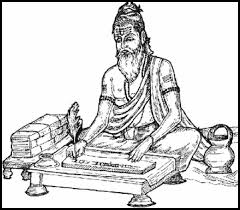
Kings in later Vedic period
In the later Vedic period many new kings evolved important among them are Kuru and Panchaya. Kingdoms flourished in the beginning. Parikshat and Janameya were the famous rulers of Kuru kingdom. Jaivali was the important rulers for Panchals.
After the fall of Kurus many new kingdoms arose like Panchlas, koala, Kasi, Videha etc. Some of the famous rulers were Kasi of Ajathasatru, Janaka of Videha. The King had the absolute power to take decisions. King performed various rituals like Rajasuya, Asvamedha and Vajpeya to strength his powers.
The King also assumed the titles like Rajavisvajanam, Ahilabhavanapathi, Ekrat and Samrat. The Sabha of Rig-Vedic period lost its presence. Taxes were collected in the name of Bali, Sulka and Bhaga. The King sought the advice of Samhiti on matters like war, peace and finance. The King was assisted by several ministers like Adhyakshas, Govikartana etc.
Organisation of society in later Vedic Period
Slowly the caste system gained control on the minds of people. People started to differentiate among themselves based on caste system. Brahmans who were intelligent and priestly class retained a high standard of excellence and knew details of the rituals.
They managed to claim the first position by claiming that they alone possessed the divinity. They performed Upanayam or thread ceremony for Brahmin boys. After this ritual the boy became twice born. Kshatriyas were the fighting class the society.
War conquest administration of the Kingdom was the principal duties of this class. The conditions of shudras were very pathetic. They were the untouchables. He was not supposed to go inside the temples or draw water from wells. He was a servant of others. Vaisyas were engaged in trade industry, agriculture, and animal husbandry.
Economy and Religion in later Vedic Period
Economic conditions in
later Vedic period
Agriculture was still the main occupation to large section of people. Wheat, barley and rice were mainly grown. People started using manure to increase the crop yield. It is said that 24 oxen were tied to plough the land. Crop rotation came into existence during this period.
Traders and business flourished, new routes were discovered to do trading. Inland trade was carried on with kirakas inhabiting the mountains.
The Vedic texts refer to both sea and sea voyages. Other occupations that started were blacksmith, carpenters and goldsmith. Barter system slowly changed to use of coins. The Aryans used coins like Niska, Satamana and Krishnaka. Bullock carts were used to carry on trade on land. Foreign trade boats and ships were used.
Extensive changes took place in religious spirits in the later Vedic period. The nature Gods like Indra, Vayu, and Varuna lost their charm. And people started to believe that life after death, the ‘atma’ (soul) returns to its original root known as ‘paramathma’ (great soul).
A host of changes occurred in the thinking of the later Vedic people. People started to believe that yajna and sacrifices alone would not liberate the soul of the man from karma. Vishnu the giver of life rose into prominence. The later Vedic period made a code of righteous conduct for every human being.
The Brahmins who were considered as supreme spread a belief that everyone was born with certain debts is and they must repay it before their death. Repayment of this debt is considered to be the ‘Karma’ work each one done during the life time.
It was believed that deepening on the ‘debt/ credit’ people are born in various castes. For example a person who has done good deeds in the past life was expected to be re-born as Brahmin or Kshyatruia and people who have committed many sins would be born into a shudra family.
Various methods of such repayment of debt were to repay to God, Rishi by doing yajna and by performing funeral ceremonies and shraddhas. Not only the religious simplicity of early Vedic age became more rigid and complex unlike early Vedic period but also there was addition of several new philosophical thoughts.
During later Vedic period tapas, brahmacharya came into existence. An ascetic renounced the worldly pleasure and would practice with the belief that they would attain ‘Nirvana’ heaven by following the principles of life.
The life of people was divided among four parts Brahmacharya, Grihasta, Vanaprastha, and Sanyasi. It was believed that people should follow all four parts to attain divinity in life. Also many superstitions started creeping into the society. Life in early Vedic Period was simple while during the later Vedic Period life was getting complicated through rigidity of thoughts and selfishness.
Education in later Vedic Period
Education was given at most importance and value during later Vedic period. Boys had to learn Upanishads, grammar, law and other language. After Upanayam or the sacred thread ceremony boys were sent to gurukul for higher education.
Even king’s children were made to go to gurukul to learn armoury and Vedas. After completing studies students had to give guru dakshina to the teacher. Teachers were highly respected even by kings. There was no differentiation by teacher among the students. Rules were same for all students even for the children of a King.
Practical education like preparing fire for yajnakund, to take care of after animals and feeding them were taught. Rearing, thinking, and meditation were the three parts of mental education. There was no uniform and children were made to sit on the floor.
They were allowed to stay in gurukul till the age of 12 years. Position of women deteriorated in later Vedic period. Education was not imparted to Women. They were made to be at home and learn all house hold activities like cooking, cleaning etc.
She was not allowed to step out of the house. Women were married at a very early age 8years. Women were considered as machines for bearing children. Widow and sati system were followed
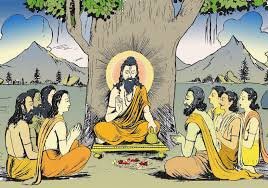
Decline in Vedic civilisation
Exact reasons for the decline of this civilisation are unknown even today. However, few vague reasons are cited such as the birth of new religions like Jainism and Buddhism. With the birth of the new religions, like Buddhism and Jainism Hinduism was getting less prominence.
Another reason quoted is that with the war of Mahabharata many Kshatriyas had died and most of north India was empty. Irrespective of the reasons for this decline, we still practice Vedas and study about the great epics that took place in this civilisation
Update on coronavirus in India
Affiliate Disclosure:
If you make any purchase via a link on this site, I may receive a small commission with no added cost to you.
